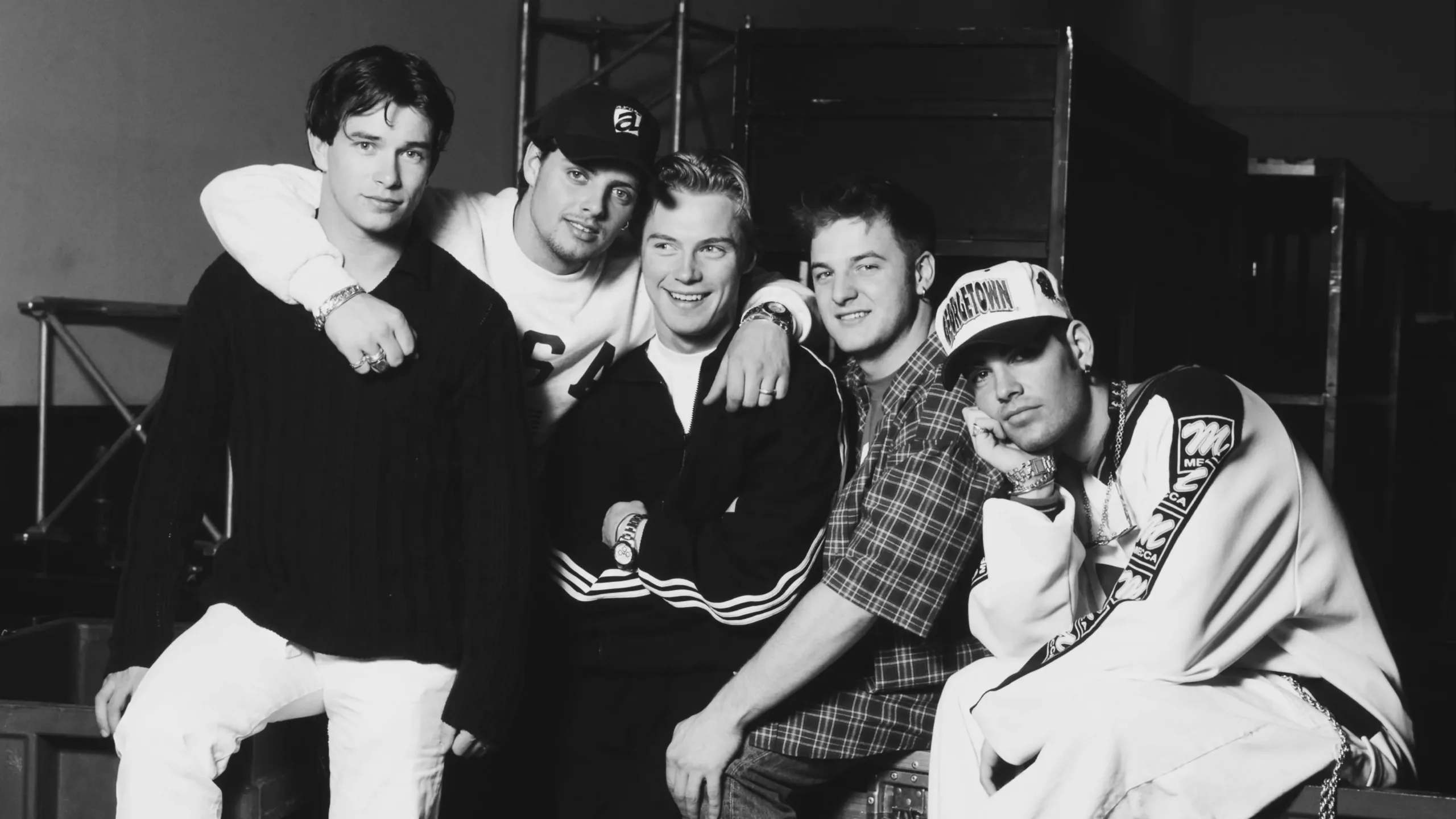Boyzone remains a symbol of Irish pop success, as this documentary recounts the band’s transformation from eager teenagers to internationally recognized performers. The film presents an account that oscillates between times of undeniable triumph and instances of profound personal difficulty.
It sketches the genesis of the act alongside the conflicting pressures imposed by relentless public exposure and management decisions that shaped their shared experience. The narrative revisits the period of simple beginnings, marked by youthful ambitions and candid interviews, and follows the evolution of internal struggles that came to define their public persona.
A series of intimate testimonies allow viewers to witness firsthand the pressures faced by the band members, accompanied by moments that evoke both humor and biting irony regarding the workings of the entertainment industry. The presentation not only offers a reflective look into the intricacies of pop fame but also highlights a conversational tone that mirrors ongoing shifts in television storytelling—particularly on streaming services that prioritize honest, raw narratives.
As the documentary unfolds, it poses thoughtful reflections on fame, responsibility, and the measures taken by those in control of the narrative, all while inviting a broader conversation about the intersection of media practices and cultural change.
Foundations in the 1990s: Boyzone’s Genesis
The documentary takes us back to an era where Irish youth culture was shaped by both tradition and newfound modernity, drawing attention to the band’s early selection process during the early 1990s. In this period, hopeful young men auditioned for a chance to be part of a group destined for pop stardom. The casting sessions, filled with nervous energy and high expectations, laid the groundwork for what would become one of the most talked-about pop acts.
Irish society in the 1990s carried an air of transition, influenced by economic changes and cultural shifts. This environment played a role in nurturing a scene ripe for mass appeal acts that bridged working-class sensibilities with the optimism of modern youth. Television provided a powerful platform where Boyzone made their first notable appearance, and this moment captured a mixture of public excitement and media fascination that would define the band’s image going forward.
Their debut on a much-watched national talk show created a buzz that was both immediate and lasting. The public response ranged from enthusiastic support to skeptical scrutiny, revealing the inherent tensions that accompany rapid ascension to fame.
The young band faced intense pressure from expectations that came with sudden media attention. This pressure was evident in the discussions of early challenges, where the burden of public performance and tight schedules required quick adjustments that tested the mettle of all involved.
In a landscape where pop acts were emerging across the globe, Boyzone managed to cultivate an identity distinct from their contemporaries. Early media coverage played a significant role in establishing an image that balanced affable charm with an undercurrent of ambition. The way the band was presented in the press laid the foundation for a long-lasting presence on television, setting an example for how media narratives could shape a group’s public persona and ignite discussions about representation in popular culture.
Internal Dynamics and Personal Growth
Ronan Keating emerges as a central figure whose career and inner reflections mark a turning point in the band’s evolution. His early role set the pace for Boyzone’s public identity, and his eventual decision to build a separate career highlights the personal cost of growing up under a harsh spotlight. His story reflects the struggle between artistic vision and the pressure to satisfy an ever-demanding audience.
Shane Lynch, Keith Duffy, and Mikey Graham contribute distinct personalities that color the collective experience of the group. Lynch displays a fervent intensity during critical moments that hint at hidden layers of ambition. Duffy’s presence combines charm with occasional glimpses of personal vulnerability, while Graham offers a quiet demeanor that often acts as a counterbalance to more forceful energies. Each member’s unique manner of dealing with intense schedules, public expectations, and internal ambitions paints a picture of a diverse set of responses to sudden stardom.
The series also pays special attention to the memory of Stephen Gately. His personal narrative, shared through rare archival moments and touching testimonials, leaves an enduring mark on both the band’s legacy and the overall tone of the production. His story serves as a sober reminder of the human side of the public spectacle and the lasting impact of personal loss.
The interactions among the band reveal a complex mix of camaraderie and internal friction. Moments of genuine mutual support appear alongside the strain of competing ambitions and creative disagreements. This dynamic is rendered with a mix of humor and candid reflection, offering insight into how continuous public scrutiny reshaped each member’s self-perception. Observing these personal shifts provides a window into the challenging balance between collective identity and individual ambition in an environment defined by relentless media attention.
Media Tactics and Public Perception
Louis Walsh employs a style marked by calculated theatrics and deliberate exaggerations that sculpt the band’s image. His practices involve staging controversies and issuing provocative statements designed to catch the eye of media outlets. One instance features a fabricated crisis that hijacked headlines and diverted attention from the members’ creative efforts. This method captured public interest and increased the pressure placed on the performers, who had to contend with stories crafted far from their actual experiences.
Press outlets, both on television and in print, contributed to a cycle of sensational coverage. Their willingness to broadcast these stirred-up narratives created a landscape where reality was obscured by carefully arranged spectacles. Public reaction was intense, oscillating between admiration for the spectacle and criticism of its distortions. As a result, the pressures of relentless publicity weighed heavily on the band members, shaping personal challenges that remained hidden behind the crafted stories.
The strategy of mixing staged media moments with intentionally controversial news items set a precedent that altered how similar acts would be presented in the future. Production teams and newsrooms followed a playbook where intentional media maneuvers decided an act’s public reputation.
The orchestrated display carries an almost dramatic quality that asks the audience to reconsider the authenticity of what is seen on screen. At times, this results in ironic juxtapositions, where the very methods designed to boost the band’s appeal instead expose the vulnerability of those thrust into the glare of public scrutiny. This case stands as a clear example of media power at work, shaping narratives that serve commercial aims while masking the genuine experiences behind them.
Musical Impact and Legacy
The series examines the creative journey behind Boyzone’s memorable hits. The band’s approach to crafting songs reveals a clever mixture of catchy lyrics and relatable themes, with contributions from each member sparking distinctive musical moments. Early efforts in the studio built an environment where raw talent met calculated production—a fusion that, at times, borders on theatrical satire, as the production process often mirrored the media circus that would later follow.
Chart performances speak to the widespread appeal of their music during the 1990s and early 2000s. Their work influenced the pop music scene in ways that set the stage for future acts with similar backgrounds. The lasting appeal of the group finds roots in both the performances on stage and the meticulous selection of sound that resonated with audiences globally.
A recurring observation is the dual focus on the band’s creative output and their highly managed public image. The tension between authentic musical expression and a manufactured persona frequently surfaces within the narrative of the documentary. Behind every hit record lies the story of a group attempting to reconcile artistic ambition with external pressures—an irony not lost on those who observe the entertainment industry’s penchant for spectacle.
This portrayal casts a spotlight on the ongoing dialogue between artistry and publicity, offering insight into how recorded music, far from being a mere extension of celebrity, carries a weight of its own within cultural discussions. Documentary Structure, Storytelling, and Emotional Depth
The documentary employs a time-based narrative that traces the band’s evolution from its early days to recent retrospectives. Using chronological sequencing, the series highlights key moments that shape both the personal journeys of the band members and their public image, allowing viewers to witness the impact of historic events on everyday experience.
Historic clips and rare interview segments are interlaced with current reflections, offering viewers an immersive visual record that complements the narrative. This integration of archival material with recent footage serves to underscore shifts in social attitudes toward celebrity culture and the expectations placed on public figures.
The series adopts a transparent, introspective tone where the band members share unguarded reminiscences. Such genuine admissions shed light on the tension between personal struggles and the glitter of stardom, inviting viewers to consider the human cost of fame. The narrative rhythm is carefully managed, alternating moments of light-hearted banter with more emotionally charged recollections that offer insight into the challenges of maintaining personal integrity amid public acclaim.
The editing choices, combined with a deliberate use of sound and imagery, create a rich sensory experience that prompts reflection on how personal recollections intersect with widespread media narratives. The deliberate contrast of intimate testimonials with major cultural events provides an intricate portrait of an era marked by rapid technological change and shifting social views.
Reflections on Fame and the Modern Music Industry
The narrative examines the emotional toll of rapid ascension under the glare of media scrutiny. Personal accounts reveal the weight of constant public exposure and the strain imposed by unrealistic expectations. The band members recount moments of isolation, and their reflections paint a picture of a life marked by sacrifice and difficult choices made in pursuit of global acclaim.
Instances of calculated publicity serve as powerful reminders of how staged moments can forever alter perceptions. Such practices have left lasting marks on the individuals involved, signaling a culture where media attention drives decisions that affect personal well-being. A single orchestrated stunt often resulted in a shift in public opinion, transforming private ambition into a spectacle that many found both absurd and poignant.
The impact extends to the present state of the music industry, highlighting challenges faced by emerging artists caught in a system where deliberate manipulation of narratives is commonplace. The balance between genuine artistic expression and the constant pressure to please an ever-demanding audience remains a central issue. With public attention scrutinizing every detail, the experiences recounted in the documentary suggest that embracing authenticity might offer a way forward, even if the cost of fame has proven steep.
Full Credits
Director: Sophie Oliver
Producers and Executive Producers: Tom Barry, Dov Freedman, Hayley Reynolds, Charlie Russell
Cast: Ronan Keating, Keith Duffy, Shane Lynch, Michael Graham, Louis Walsh, Eloy de Jong
Editors: Kanwaljeet Singh Thind, Chris Johnson
Composer: Nainita Desai
The Review
Boyzone: No Matter What
Boyzone: No Matter What offers a candid exploration of celebrity, identity, and the relentless forces of media-driven fame. It blends personal revelations with an examination of industry tactics, urging viewers to reflect on the impact of orchestrated publicity in a digital era. The series challenges conventional narratives while inviting a critical look at modern pop culture dynamics. My verdict: an engaging, thoughtful portrayal of the highs and lows of stardom that resonates with today's audience.
PROS
- Thoughtful narrative supported by well-curated archival footage.
- Candid exploration of the effects of media manipulation and fame.
- Insightful commentary on changing cultural norms and representation.
- In-depth examination of personal and industry challenges.
CONS
- Limited focus on the musical aspects beyond behind-the-scenes efforts.
- Some segments may feel overly reflective for casual viewers.
- Occasional uneven pacing that might disrupt narrative flow.
- A heavy emphasis on industry critique could alienate those seeking lighter content.




















































